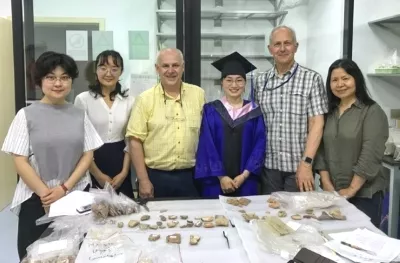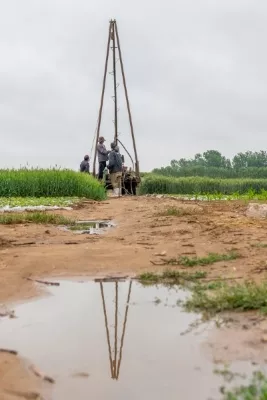Posted June 20, 2019
Gary Crawford and David Smith just returned from China where they are investigating the shift to rice agriculture in Zhejiang Province. Hosted by Fudan University in Shanghai they documented a collection of pottery Crawford and colleagues recovered from the Huxi site (9000-8500 years old) in 2017. Not many people were making pottery anywhere in the world at this time and the collection exemplifies the exceptional pottery-making skills and imagination of people in the Lower Yangze River basin at the time. Smith is applying his experience with ceramics in North America to developing a system of analysis for the Huxi pottery. Crawford and Smith also paid a visit to a new project being developed by the Zhejiang Institute of Cultural Relics/Archaeology at the Jingtoushan site (8500-8000 years old) on the south of Hangzhou Bay.
Crawford conducted field work in Shandong Province in early June before heading to Shanghai. This is a collaboration with Shandong and Yale Universities. Crawford was accompanied by Prof. Joe Desloges from U of T (Geology and Physical Geography) and Mitchell Ma, who is doing his PhD field research in Shandong. This project is investigating the relationship between the Longshan Culture (4500-4000 years old) and the local environment. While in China Mitchell Ma learned that he won a Joint Research PhD Fellowship from the China-based Confucius China Studies Program. He will spend the next year conducting field and lab research in China while being jointly affiliated with U of T and Shandong University.

The team at Fudan University (one of the team, Duan Jiming, just graduated from the Masters program at Fudan University).

Coring a floodplain near Rizhao, Shandong Province.
